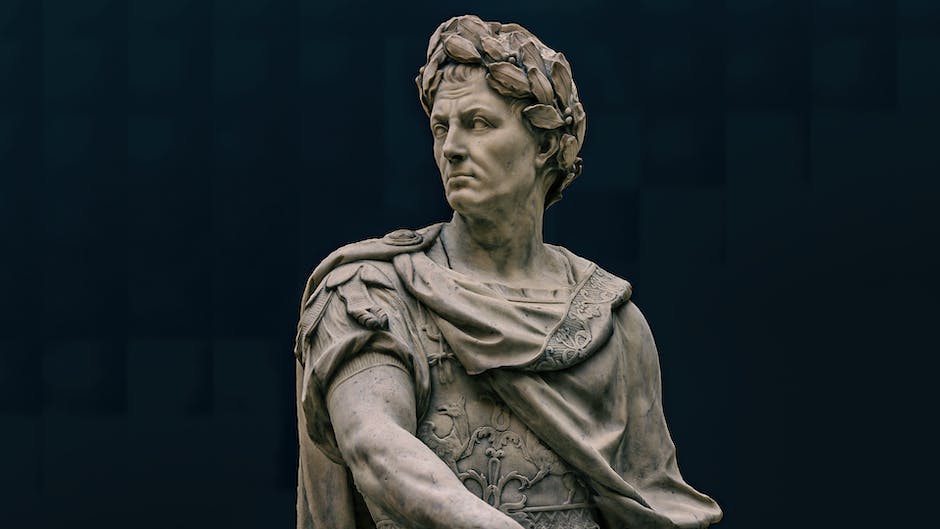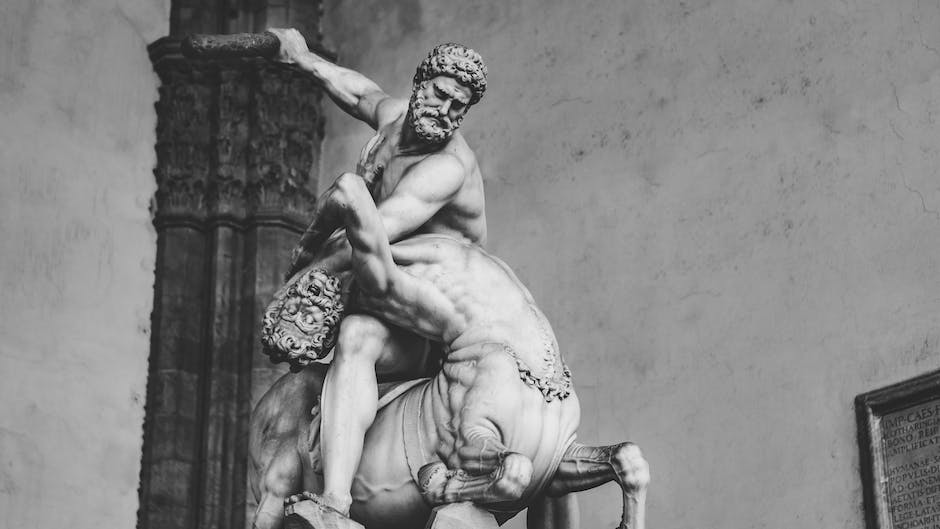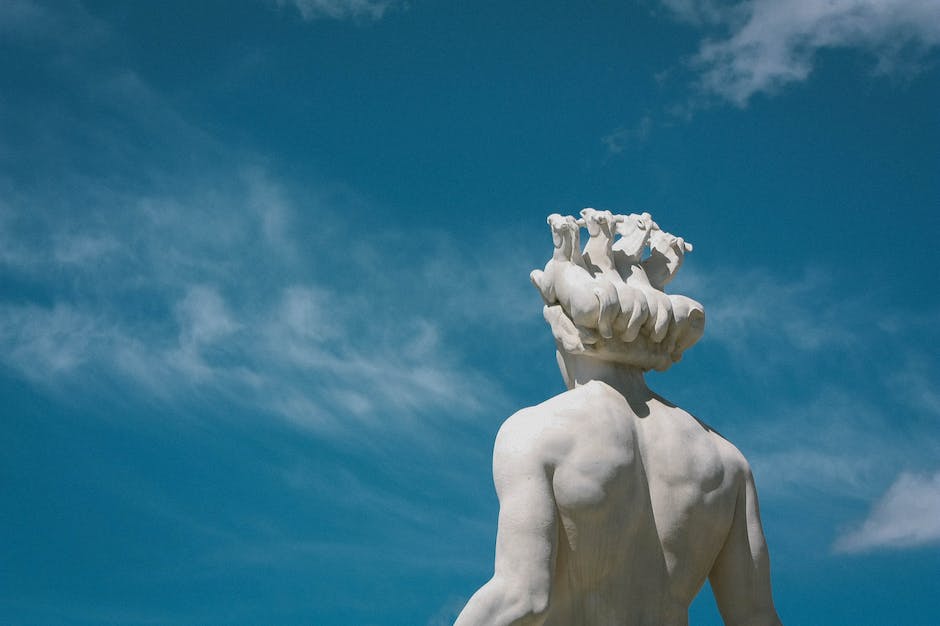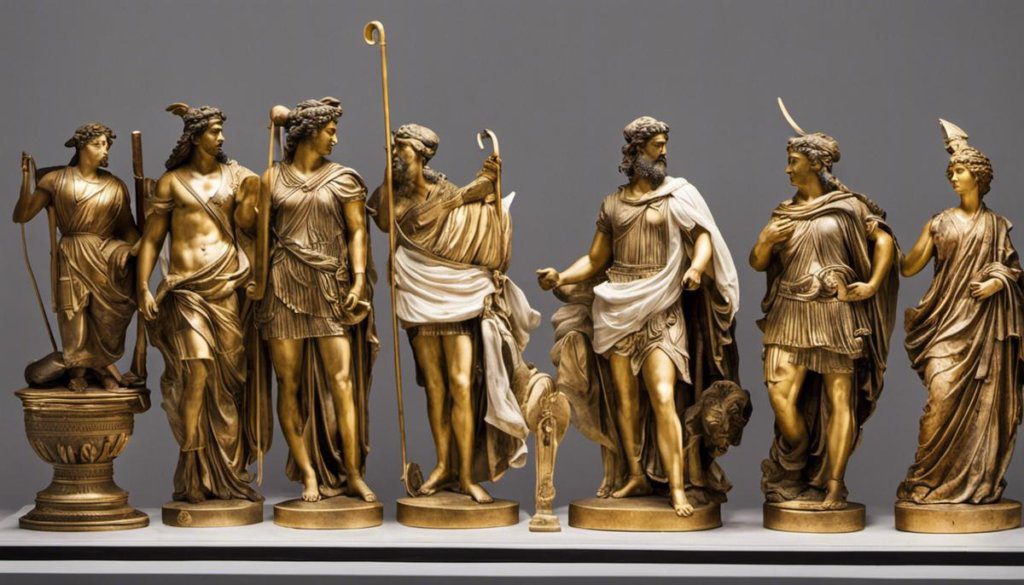In assessing the milieu of ancient Greek civilization, one can hardly overlook the outstanding contribution of Greek sculpture in charting the course of Western art. As a beacon of cultural expression, these timeless artworks offer fascinating glimpses into the collective psyche, societal ethos, and evolving aesthetics of Greek society. From the enigmatic figurines of the Cycladic islands to the majestic marble statuary of the Parthenon, Greek sculpture stands as remarkable testament to humanity’s ceaseless pursuit for beauty and truth. Unveiling the innovative techniques that moulded stone into emotion, unlocking the profound iconography they captured, and exploring their longstanding legacy, we embark on an enlightening journey through the mesmerising artistry of Greek sculpture.
Origins and Early Examples of Greek Sculpture
As we delve into the mystical world of Greek art, one cannot overlook the profound allure of Greek sculpture. These sculptures, utterly captivating in their ethereal grace, encapsulate disparate eras of Greek history and aptly mirror the evolution of their aesthetic sensibilities.
Art often goes hand in hand with history, and it is through artistic expression that we glean fascinating insights into past civilizations. And nowhere is this connection more striking than through the lens of Greek sculpture, which imbibes the incredible artistic journey of Greek culture.
In its initial stages, Greek sculpture was significantly influenced by the art of Egypt and Near East. Simple, rigid, and almost lifeless figures embodied this era, the Daedalic period or commonly known as the Geometric period (900 BCE- 700 BCE). During this time, the focus was primarily on ‘form’ rather than ‘appearance.’ The human figure was depicted with elongated bodies, triangular faces, and huge eyes, bearing a resemblance to Egyptian art. This era also gave birth to the remarkable bronze Dipylon statue found in an Athens cemetery, which in its abstract charm symbolizes a shedding of mortal life and transcendence into the divine realm.
Moving into the Archaic Period (700 BCE – 480 BCE), Greek sculpture embarked on an enchanting journey towards realism, breaching the confines of abstract geometric symmetry. The Kouros (male) and Kore (female) statues were the hallmarks of this eon, characterized by an overt Egyptian influence. These marble sculptures functioned as grave markers or were dedicated in temples as a symbol of aristocratic wealth and merit. However, unlike the strict frontal stance of Egyptian figures, Greek kouroi and korai had one foot stepping forward, injecting a slight hint of movement into an otherwise static form.
It is during the Classical Period (480 BCE-323 BCE) that the Greek sculpture truly flourished, pushing the boundary towards anatomical accuracy and emotive expressions. The hallmark of this period was the creation of statues encompassing ‘contrapposto,’ whereby the figure’s weight is placed on one foot, endowing the statues with a sense of fluidity and grace. The sculptures from this era, such as Discobolus by Myron and The Spear Bearer by Polyclitus, exemplify this transformation, symbolizing the perfect alignment of beauty and balance.
The Hellenistic Period (323 BCE- 31 BCE) hurled Greek sculpture into a whirlwind of dramatic expressions, intricate details, and colossal marvels. This phase is marked by statues showcasing heightened emotional states, stark realism, and awe-inspiring proportions, perhaps best exemplified in The Laocoon and His Sons and The Winged Victory of Samothrace. Symbolically, the sculptures from this period testifies to the mastery of craftsmanship and the tangible depiction of human emotions.
Greek sculpture, in its primal form, serves as a vivid portrayal of the human form and emotions; it reveals a captivating blend of man and cosmos. As it evolves, so do the stories it wants to narrate and the emotions it seeks to capture. From rigid geometric patterns to the embodiment of acute realism, the journey of Greek sculpture is not just a testament to changing artistic sensibilities, but a romantic liaison between history and art. The allure lies not just in their grandiose magnificence or intricate details, but rather in the silent narratives they whisper to the curious listener – an age-old testament to the human spirit in its countless manifestations.

Techniques and Innovation in Greek Sculpture
Delving further into the distinctive techniques that set Greek sculpture apart, we venture into the world of materials used. Soft limestone was widely implemented in the Daedalic period due to its amenability to carving. However, when the age of bronze arrived in the late Geometric and Archaic eras, Greek artists happily embraced the malleability and strength this material offered, allowing them to carve intricate details and render delicate, realistic impressions.
Marble, a material intrinsically linked to Greek sculpture, started making its appearance predominantly during the Archaic period. The early Greek sculptors turned those formidable chunks of natural marble into representations of divine figures or stalwart warriors, imbuing them with an almost ethereal Golden-Ivory hue. The Sculptors of Paros and Naxos islands were famed for their exquisite works – the Kouros and the Kore of Naxos are testaments to the brilliant use of marble.
The application of polychromy, an interpretation of coloured sculpture, was another estimable feat of Greek artisans. By adding mineral pigments and dyes to the finished carvings, statuary of the gods and goddesses appeared resplendent in vibrant hues, radiating an aura that added to their celestial motif. Although the colours have faded over time, remnants of the radiant ochres, blues, and reds represent the aesthetic sensibilities of the then Greek populace and bear witness to an era of artistically captivating experiences.
The Greeks were also pioneers in the lost-wax casting, a technique in bronze sculpture that realised figures in action and impressive anatomical representations. The dynamic postures and tangible emotions forged in bronze stand as a testament to the Greeks’ remarkable proficiency in this process.
Transcending mere static displays, Greek sculptures became infused with ‘pathos’, a concept implying a sculpture’s ability to evoke emotion from spectators. This uniquely Greek ideology, paired with their advanced understanding of how light played upon different surfaces, led to the creation of drapery effects on marble, where the skilled chisel work of the artist would transform stone into seemingly soft, flowing garments wrapped around the statue.
Stone cutting on a monumental scale was another ground-breaking endeavour that the Greeks excelled in. The chiselled warriors on the Temple of Aphaia in Aegina, and the dramatic battle scenes on the Alexander Sarcophagus, are examples of this commanding technique, revealing stories in bas-relief with an unprecedented complexity and vivacity.
An unexpected skill, greatly underrated yet distinctive, was intaglio carving. Ancient Greek artists showcased their deftness by etching tiny, elaborate designs onto the surface of gems. Intaglio gems were commonly used as personal seals and showcased an artist’s mastery of fine details.
From the raw material to the finished masterpiece, Greek sculpture embodied an extraordinary fusion of art, emotion, lore, and spirituality. A thermometer of ideologies, tastes, and beliefs of each evolving age, it was more than an object of fascination. The Greeks gave the world technically ingenious, emotionally resonant pieces of art that have found resonance with artisans and connoisseurs across time and civilisations. To this day, Greek sculpture remains a profound enigma, enchanting us in its splendour, continually inspiring deliberations on its masterful delivery and the artistic temperament that created it.

Iconography and Symbolism in Greek Sculpture
The Essentials of Greek Sculpture: A Manifesto of Themes, Symbols, and Narratives
Greek society, characterised by its exceptional intellectual and artistic achievements, rich myths, and well-developed pantheon of gods and heroes, echoes vividly through the grandeur of Greek sculpture. Complementing what has previously explored about periods and styles, this discussion delves into the themes, symbols, and narratives artistically narrated through these sculptures, reflecting the beliefs, values, and worldview of this intricate society.
In the grand arena of mythology, Greek sculpture played the admirable role of a chronicler. Sacrosanct narratives and glorified myths found eternal residence in stone and bronze, creating vivid illustrations of their gods, heroes, and momentous mythological events. The narrative of Zeus’s divine power, Athena’s wisdom, and Hercules’s valorous exploits imbues sculptures from the Olympia, Parthenon, and various pediments, acting as testament to the Greeks’ devoutness and religious beliefs.
Symbolism, a significant artistic language, empowered these sculptures to carry profound socio-cultural meanings. As an instance, the repeated portrayal of the ‘lion-man’ theme – rendering a human body with a lion’s head, symbolised strength and power. More, the abstraction of the winged Nike was an ode to victory, often found in war memorials. Their adoration for the human form translated into representing gods in human shapes, synonymous with perfection and virtue.
Furthermore, Greek sculptures were a savvy blend of symbolism and realism. Renowned for its precise depiction of human anatomy, it depicted mortality and life’s transient nature through the well-crafted memento mori. Simultaneously, mythical creatures like Centaurs, griffins, and sphinxes projected the mystical dimension of their symbolic universe.
Emblematic narratives derived from epic poems of Homer and Hesiod stand embraced in Greek sculptures. These tales encapsulated the artistic frame, nosing out vivid emotions and conflicts of life. The tale of Trojan War, the wrath of Achilleus, the exploits of Hercules, and the much-celebrated Odyssey, translated into sculpture—it narrates their values of bravery, intellect, and strategic wisdom.
Entering the political dimension, sculptures were often the mirrors reflecting the society’s political dynamics. Observing the statues of famed politicians and statesmen, one realizes the ardent belief in democracy. These representations embodied the society’s admiration for leaders and ideal citizens, shaping their political worldview.
Thus, Greek sculptures—beyond being mere figures in stone and bronze, signified a greater convergence of art, mythology, politics, and society. They encapsulated transgenerational narratives and enduring symbols, crafting an everlasting visual memoir of Greek philosophy and worldview. Engulfed in their chiselled folds and timeless frames, these sculptures continue to cascade their influence, making them an eternal marvel in the enigmatic realm of art.
At the brink of immortality—cast in stone and bronze, Greek sculptures remain a perpetuating time capsule of an exceptionally enigmatic era, resonating the ancient society’s beliefs and worldview with roars long after the chisel’s echo has faded. With symbolism and narratives embraced, Greek sculptures bear the essence of their creative journey, narrating tales of aesthetic evolution that continue to inspire and captivate generations of artists and viewers.

Impact and Legacy of Greek Sculpture
Greek Sculpture: Echoes of Influence in Subsequent Civilization and Contemporary Art Practices
Greek sculpture is outwardly a captivating chronicle of human advancement, one that zealously narrated the earnest exploration of anatomy, emotion, balance, and more, casting a powerful sway on the path of artistry in subsequent civilizations. Yet, buried within this grand façade is the magnanimous influence it had on various dimensions of life as we know it today. Unravelling its enigma, we shall survey the considerable inheritance left by Greek sculpture across various civilizations and its continued resonance within contemporary art practices.
Imagine a panorama spanning the seas of time, serving as the perfect platter for the evolution of art influenced by Greek sculpture. Travel back to the Roman Empire and one would find an insatiable admiration for Greek art. As flourishing patrons of Greek craftsmanship, the Romans expressed their penchant through reworking the original Greek pieces, thereby ensuring a seamless blend of socio-political narratives with aesthetics. Yet what fascinates is not merely the Roman adoption of Greek aesthetics, but the intrinsic adoption of the Greek philosophy of beauty, narrative, and form. The result? A pantheon of divine Roman gods, offspring of their Greek counterparts in both appearance and lore, standing tall in marble and bronze in the Roman Empire.
Yet, Greece’s antiquity aesthetics did not merely captivate the Romans. The wave of the Renaissance, with its ethos of humanism and valiant celebration of human potentiality, bore a striking resemblance to the ideology of Greek sculpture. The sculptors of this era, such as Michelangelo and Donatello, immortalised their fascination with the Greek ideal of the human form, breathing life into marble, and thus shaping the culture of the Renaissance and beyond.
Steering to the East, one can find Greek traces in the Great Buddha of Kamakura in Japan, a testament of the syncretic blend of Greek and Buddhist artistry. This colossal bronze statue stands as an emblem of the Gandharan art style, a confluence of Hellenistic and Indian elements, among other influences.
Basking under this vast historical influence, contemporary art practices still resonate with Greek sculpture aesthetics coup de maitre. From Antony Gormley’s abstract human forms bearing uncanny parallels with the Kouros statues, to the marble mimicry in the works of Italian artist Medardo Rosso—we see the power of Greek sculpture, echoing across the centuries.
Yet it is not just about marble and bronze, movement and equilibrium. Greek sculpture’s legacy is also alive in the narrative potent of art—its unique ability to evoke pathos, to share tales, to symbolically represent agendas. These influences have found a comfortable niche within the heart of contemporary art practices.
Finally, it is amidst this harmonious blend of past and present, history and innovation, that the true gravitas of Greek sculpture stands apparent. For the present is but a reflection, a projection even, of the past onto the lenses of the future. It is a testament that the powerful allure of Greek sculpture will continue to breathe life into our aesthetics, narratives, and indeed our very perception of an ever-evolving reality.

When we step back and contemplate the sheer brilliance of Greek sculpture, it is evident that its ramifications stretch far beyond the confines of ancient times. Securely entrenched in the roots of Western art, Greek sculpture’s impeccable realism, dynamic composition, and evocative symbolism resonates through millennia – in the grandeur of Roman statuary, the rebirth of classicism during the Renaissance, and even in our modern aesthetical sentiments. Undeniably, the Greek sculptural tradition has sculpted the trajectory of art history itself, and it continues to stimulate and inspire to this day. Whether we recognize it or not, Greek sculpture is engrained in the foundation of our artistic consciousness, quietly whispering tales of bygone eras and a famed civilization’s quest for perfection.
Recommend0 recommendationsPublished in Art History







Responses